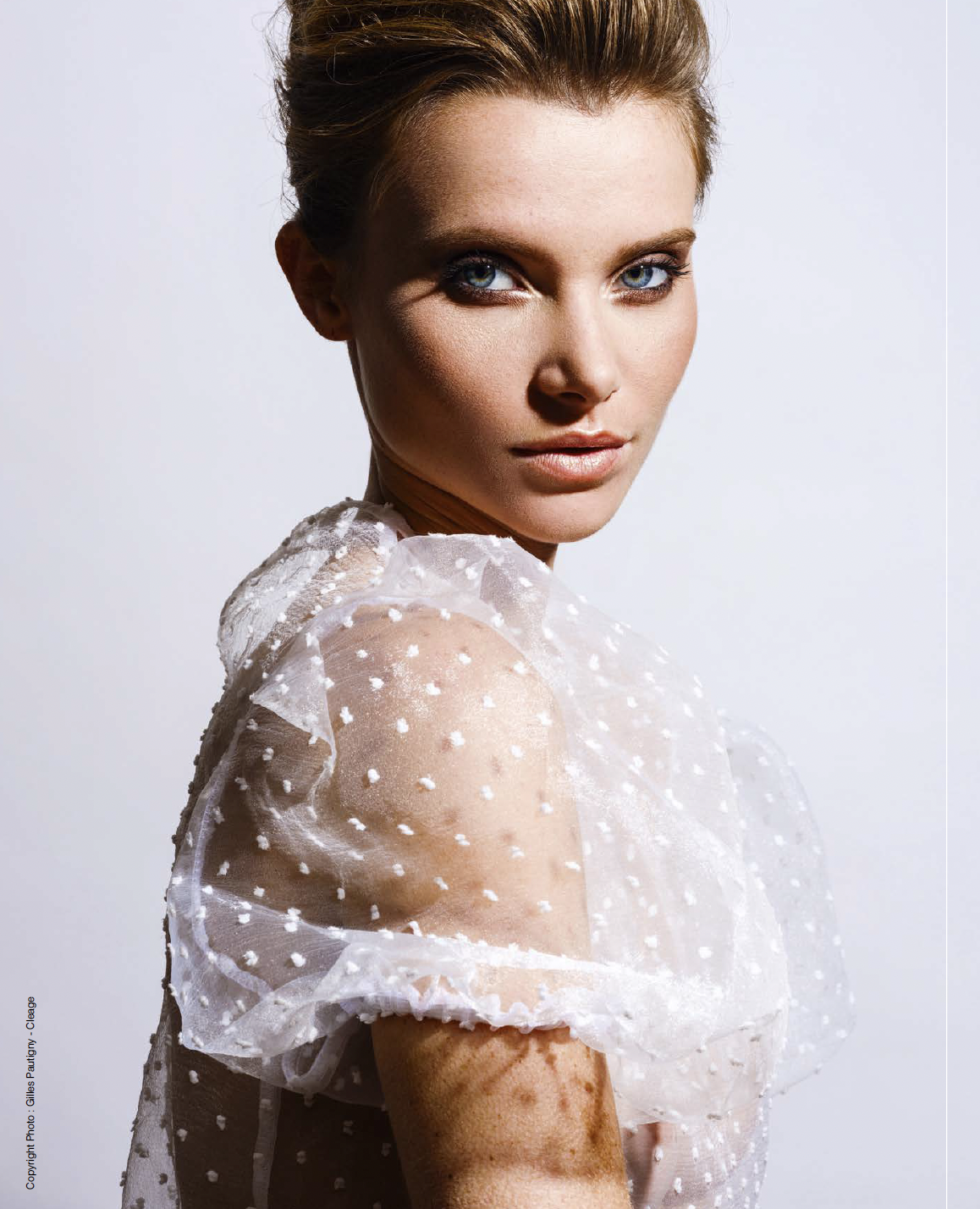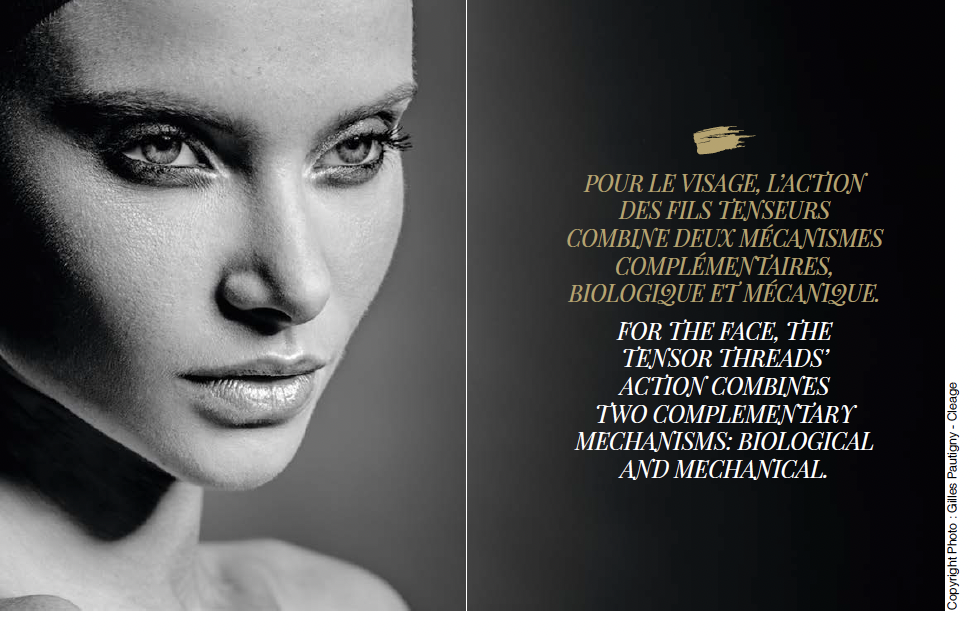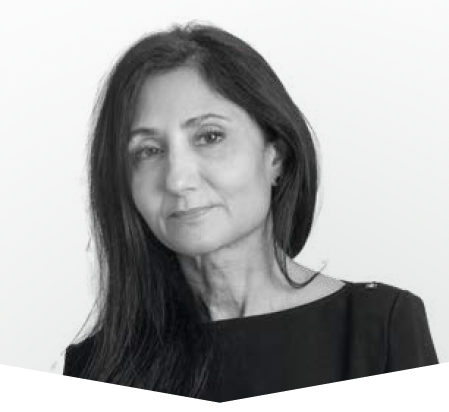Dr Lourdes Sagnard
This aesthetic medicine technique is often called a non-surgical lift. It is a real alternative to surgery and, as a result, its popularity is soaring. We chatted to Dr Lourdes Sagnard, an associate doctor at the CLEAGE Clinic Geneva and aesthetics doctor at the CLEAGE Centre in Lyon.
How would you define tensor threads?
 Dr Lourdes Sagnard: Tensor threads are threads equipped with different types of “barbs” which, once they are inserted, attach to the dermis and efficiently pull the skin to counter the effects of aging. They should not be confused with what we call “gold threads” from the 1980s, which are almost obsolete nowadays.
Dr Lourdes Sagnard: Tensor threads are threads equipped with different types of “barbs” which, once they are inserted, attach to the dermis and efficiently pull the skin to counter the effects of aging. They should not be confused with what we call “gold threads” from the 1980s, which are almost obsolete nowadays.
Resorbable or non-resorbable?
Dr Lourdes Sagnard: These are completely different types of thread. Resorbable threads are made from materials that are widely used in aesthetic medicine and surgery. They gradually break down over time. When their effects have faded away, more can be inserted. They are non-allergenic and are quick to settle. They are made in a similar way to surgical thread, but out of materials that induce collagen. There are different types of resorbable threads available: polydioxanone (PDO) and polylactic acid threads (PLA). The former last for 9 to 12 months, and the latter for 18 to 24 months. Non-resorbable threads are surgical threads that do not break down over time, so their lifting effect lasts 5 to 10 years. Of course, the skin will age over time, so its quality will decrease; this can be addressed with either more threads or with injections. We often complement both types of threads with some injections to make a few tweaks a month after insertion.
Are resorbable threads more commonly used?
Dr Lourdes Sagnard: The good thing about resorbable threads is that they are not permanent and require very little or no downtime. Resorbable threads rehang the skin, support the sagging tissues and make a clear improvement to the skin quality. The results are natural-looking and almost immediate.
Is there a difference between how doctors insert resorbable and non-resorbable threads?
 Dr Lourdes Sagnard: Whether they are resorbable or non-resorbable, the threads are inserted in the same way by an experienced aesthetics doctor. We either use cannulas or needles, depending on the type of threads we are inserting. I mark out the areas, administer a local anaesthetic around the entry points, and insert the threads using a cannula or a needle.
Dr Lourdes Sagnard: Whether they are resorbable or non-resorbable, the threads are inserted in the same way by an experienced aesthetics doctor. We either use cannulas or needles, depending on the type of threads we are inserting. I mark out the areas, administer a local anaesthetic around the entry points, and insert the threads using a cannula or a needle.
What results can we expect?
Dr Lourdes Sagnard: For the face, the tensor threads’ action combines two complementary mechanisms: biological and mechanical. Though the lifting effect is immediately visible, the definitive results can be noticed after three months, when the body has created its own fibrosis. The dermis recovers its density and the skin recovers its radiance. For me, the results of threads are much more natural-looking than a lift. Tensor threads allow us to redefine the oval of the face, lift the cheekbones and the eyebrows, and erase the nasolabial folds and expression lines. After inserting the threads, a check-up is scheduled after a month and after three months. Depending on the results, I might recommend injections to enhance the facial volumes.
What about the neck?
Dr Lourdes Sagnard: I also treat the neck with threads. This is an interesting procedure because a neck lift does not give great results, but we can achieve excellent results with threads. The condition of the neck – whether it is very crumpled or not – will determine which kind of threads we use, and we can even combine both resorbable threads and non-resorbable threads to both stimulate the skin and tighten it! It is an excellent method for treating skin sagging in the neck without resorting to surgery.
Are there any counterindications?
Dr Lourdes Sagnard: Auto-immune diseases are the main counterindication. It is worth noting that there is no age limit for threads, but when the skin is very thin and very saggy, we must first use a filler to tighten up the tissues. The procedure is carried out in out-patient surgery.
What precautions must be taken before having tensor threads fitted?
Dr Lourdes Sagnard: To help the skin to attach to the threads, we recommend sleeping on your back for two weeks after the procedure and avoiding going to the dentist, biting into large apples, laughing too hard, doing violent sports or using saunas, steam rooms or swimming pools, and avoiding UV rays. Anti-coagulants are not really a counterindication, but it is important to inform your doctor if you are taking them.
How much do they cost?
Dr Lourdes Sagnard: From 900 euros, depending on the number of threads inserted and whether they are resorbable or permanent.
 Dr Lourdes Sagnard: Associate doctor at the CLEAGE Clinic in Geneva. Aesthetics doctor at the CLEAGE Centre in Lyon. Graduated in medicine and surgery from the University of the Basque Country. Diploma in acupuncture from Claude Bernard Lyon 1 university. National diploma in homeopathic therapy. European interuniversity degree in plasmapheresis. Member of the AFME, the SOMEREFS (“easy lift” barbed threads) and the Association of Homeopathic Medicine in Lyon.
Dr Lourdes Sagnard: Associate doctor at the CLEAGE Clinic in Geneva. Aesthetics doctor at the CLEAGE Centre in Lyon. Graduated in medicine and surgery from the University of the Basque Country. Diploma in acupuncture from Claude Bernard Lyon 1 university. National diploma in homeopathic therapy. European interuniversity degree in plasmapheresis. Member of the AFME, the SOMEREFS (“easy lift” barbed threads) and the Association of Homeopathic Medicine in Lyon.
Cleage Geneva : cleageclinic.com
Cleage Lyon : cleage.fr














